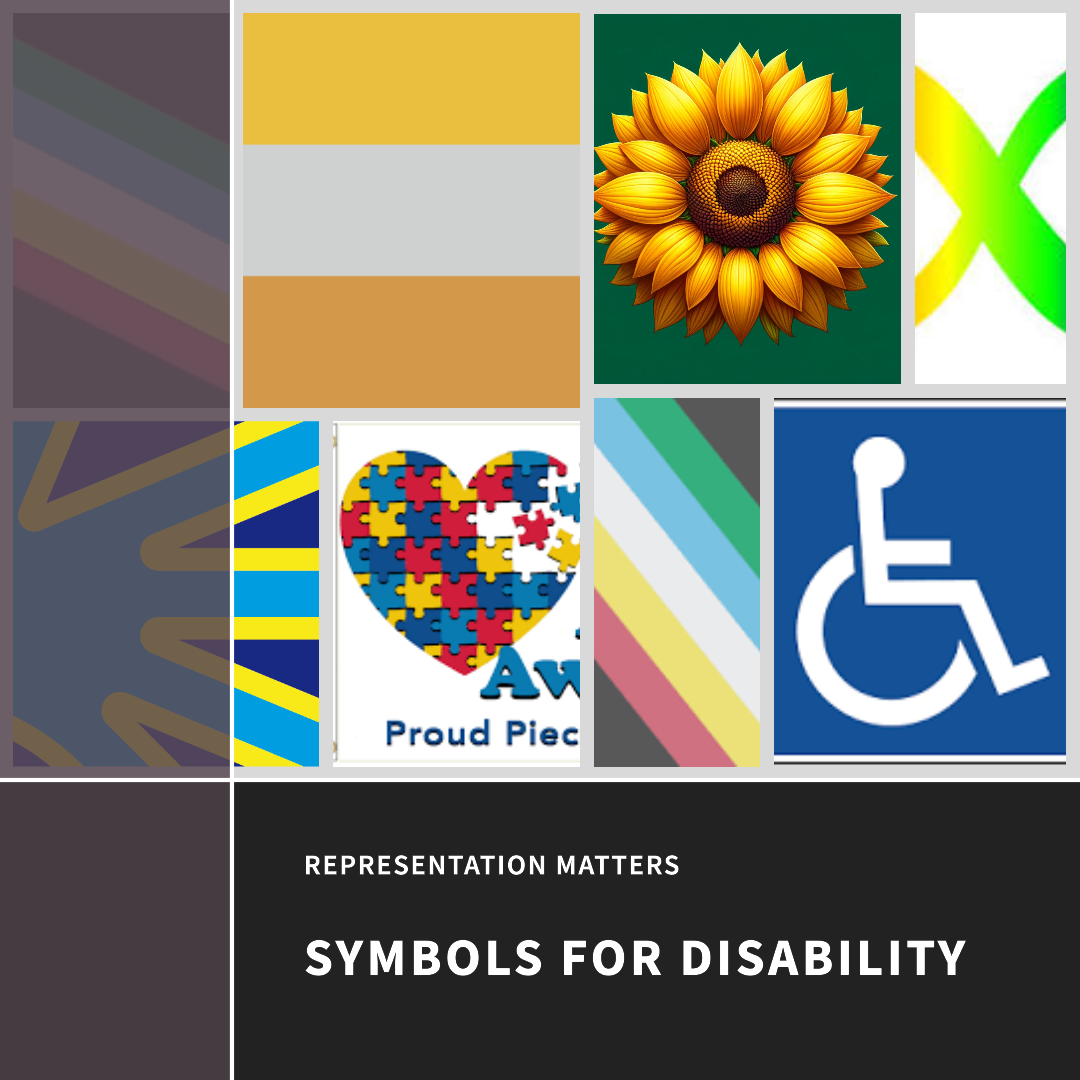
Disability Flags and Symbols
Share
A World of Flags: Recognising Disability Pride and Accessibility
Flags play an important role in representing diverse communities and experiences. For the disability community, flags can symbolise advocacy for rights and accessibility, as well as pride in disability identities. This article explores some notable disability flags and their meanings.
Symbols of Accessibility
The accessibility symbol flag features the classic wheelchair icon against a blue and white striped background. First used in 1968, this design is now recognized globally as a symbol of access, signifying places and information that are available to all regardless of disability.

The First Disability Flag
The Disability Flag, also known as the Overcoming Flag or Flag of the Rights of Persons with Disabilities, symbolises individuals with disabilities. Created by Valencian dancer Eros Recio in 2017 and presented to the United Nations, it's designed for use at disability-focused events, including the International Day of Persons with Disabilities. Featuring gold, silver, and bronze horizontal stripes, the flag reflects the Paralympic medals, representing overcoming societal obstacles and celebrating disability rights and awareness. Its colours signify different disability forms, with their meanings determined by the disability community.
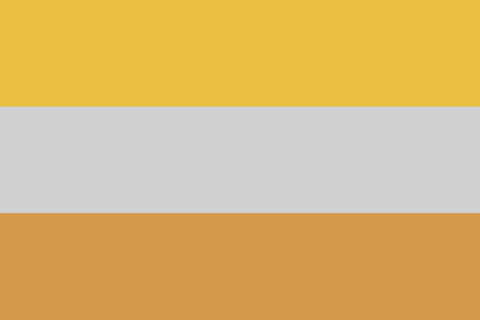
Sunflower Card - a symbol of hidden disability

The bright and vibrant sunflower has become a recognized symbol representing people living with hidden disabilities and illnesses. In 2016, the Hidden Disabilities Sunflower was created by the UK charity Hidden Disabilities to increase understanding of “invisible” disabilities. Often those with disabilities like chronic pain, diabetes, or mental illness have no visible signs, yet face stigma and judgment.
The sunflower pin and logo provide a subtle way to indicate they need additional support, patience, or accommodations without having to publicly disclose private health details. The sunflower represents the inner beauty and strength of those living successfully with challenging medical conditions, including sensory issues, mobility needs, fatigue, or learning differences. Like following the sun, the sunflower conveys growing toward light and thriving even through adversity. This positive symbol empowers and celebrates the hidden disability community while advocating for a more inclusive understanding from society.
Celebrating Unique Identities
The autism pride flag has a rainbow-colored puzzle piece pattern. First unfurled in 2005, this design represents and celebrates the autistic community, draws attention to diversity across the autism spectrum, and advocates for neurodiversity.
The Controversy about the Autism Flag
The autism flag with its rainbow puzzle piece pattern has become controversial within some parts of the autistic community.
The puzzle piece symbol was first used to represent autism in 1963 by the UK’s National Autistic Society. It was meant to depict the “puzzling” nature of autism spectrum disorders.Later, Autism Speaks, a major autism organization founded in 2005, popularized a blue puzzle piece logo. However, Autism Speaks has faced ongoing criticism from some autistic self-advocates for promoting negative views about living with autism.
So the puzzle piece flag design, created for Autism Pride Day in 2005, stirring debate. To some, its bright colors and puzzle pieces positively reflect neurodiversity and the infinite possibilities of autistic people.
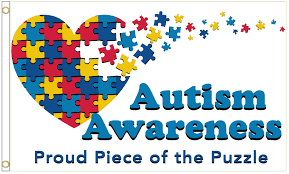
But others find it offensive due to the symbol’s associations with Autism Speaks and the suggestion that autistic people are puzzles needing to be solved.
Many autistism advocates prefer alternative symbols like the rainbow infinity logo, representing diversity and potential.
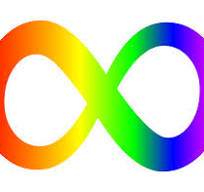
There is no single united symbol for the autism community. Flags carry cultural meaning, so this debate reflects deeper disagreements within the community about autism identities, acceptance versus awareness, and who has the right to define these representations.
So while the autism pride flag has brought greater visibility, its puzzle imagery remains controversial as alternative symbols continue evolving to celebrate autism. The conversation illustrates differing views on how to recognise autism within society.
The Deaf Flag
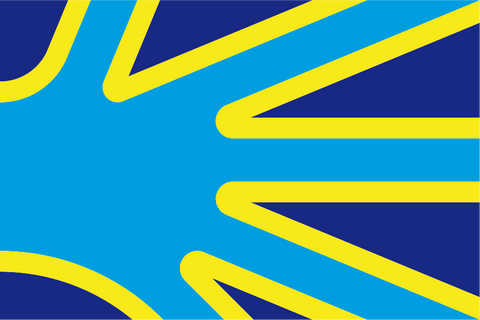
In July 2023, the World Federation of the Deaf (WFD) approved an official Deaf flag at its 20th General Assembly. This flag will serve as a unifying symbol to represent Deaf communities globally.
The Deaf flag consists of three colours with symbolic meaning:
Turquoise Blue - Signifies the Deaf community, sign language, unity and pride. This shade of blue is deeply connected to Deaf culture.
Yellow - Represents enlightenment, thriving in harmony, and the visual nature of the Deaf experience. It is the colour of light.
Dark Blue - Stands for humanity, earth, and living in accord with the planet. Dark blue is also the color adopted by the WFD and worn by Deaf advocates.
Together, these colors on the Deaf flag promote awareness of diversity, including linguistic diversity. They reinforce that Deaf people are part of humanity with a rightful place in the world.
The Deaf flag was designed by Arnaud Balard, a French deafblind artist. The WFD selected it after a process involving input from Deaf communities worldwide. Groups can now order the flag to display and celebrate Deaf pride.This simple yet meaningful design will give Deaf people a consistent symbol to rally behind in the ongoing fight for Deaf rights and accessibility.The Deaf pride flag, created in 2010, has a white background featuring a blue circle and y-shaped symbol adapted from the Disability Pride Flag. This flag affirms pride in Deaf culture and identity and is used at Deaf cultural events worldwide.
Updating the Disability Flag
The Disability Pride Flag has an important history and symbolism in representing the disability community.

The original Disability Pride Flag was created in 2019 by writer Ann Magill, who has cerebral palsy. She designed a flag with brightly coloured zigzagging stripes over a black background, with the zigzag shape representing the barriers disabled people face.
However, the bold colours and zigzags caused issues for people with visual sensitivities and conditions like seizures or migraines.
Magill worked with the disability community to create an updated, more accessible version in 2021. This redesigned flag features coloured stripes in muted hues and straight angles against a faded black background. The stripes represent different disability experiences, moving from top left to bottom right:
- Green - Sensory disabilities like blindness, deafness or lack of taste/smell
- Blue - Emotional/psychiatric disabilities including mental illness and anxiety
- White - Invisible and undiagnosed disabilities
- Gold - Neurodivergence like autism or ADHD
- Red - Physical disabilities
The faded black background symbolises mourning for victims of disability violence and oppression. The diagonal stripe visually cuts through barriers faced by the disability community collaborating with the community to solve accessibility issues,
Magill created a flag that better represents the diversity of disability experiences. The Disability Pride Flag has become an inclusive symbol of the ongoing fight for disability rights and justice. Its evolution shows how the community came together, across different disabilities, to advocate for each other.

Graphic Image Description: The Black Field: A colour of mourning and rage; for those who are victims of Ableist violence, and also rebellion and protest
The Five Colors: The variety of needs and experiences (Invisible and undiagnosed disabilities, physical disabilities, neurodivergence, psychiatric disabilities, sensory disabilities)
The Parallel Stripes: Solidarity within the Disability Community and all its differences
The Diagonal Band: “Cutting across” barriers that separate disabled people; creativity and light cutting through the darkness.
Why have Flags?
Flags give the disability community a way to gain visibility, celebrate identity, and advocate for rights and inclusion. As the fight for disability justice continues, these symbols emphatically state: disability pride and accessibility for all!
